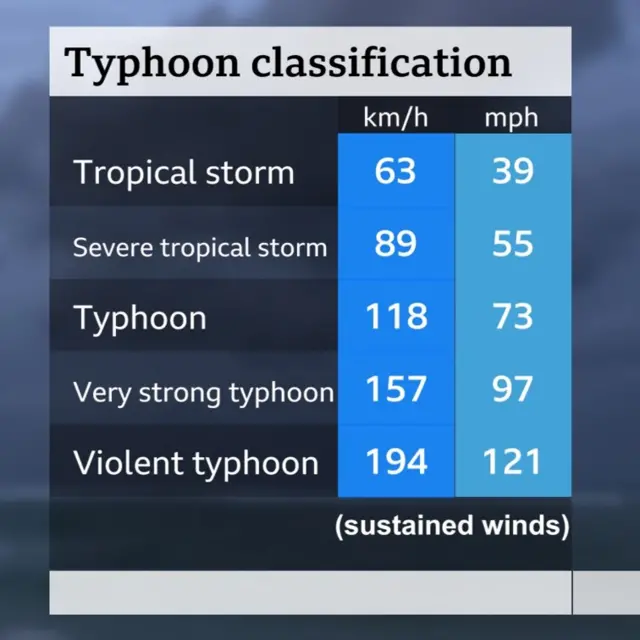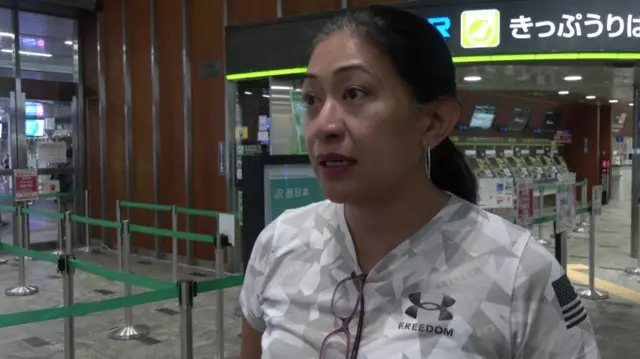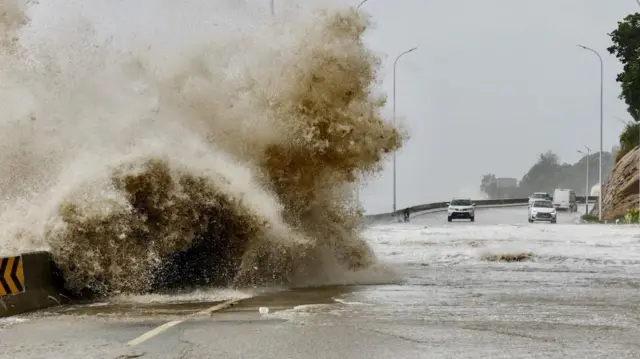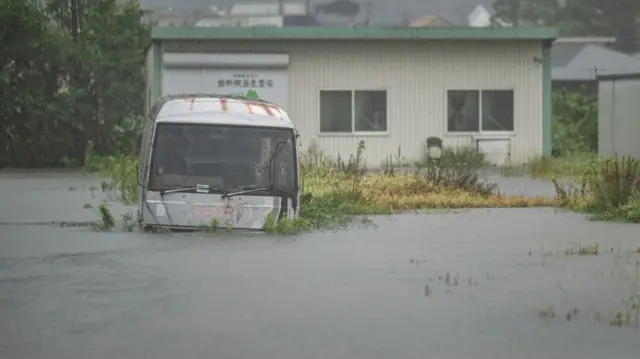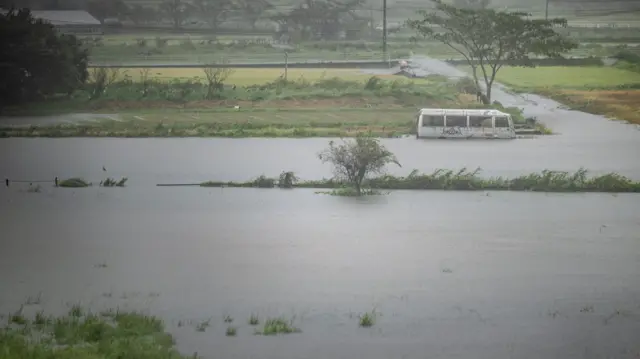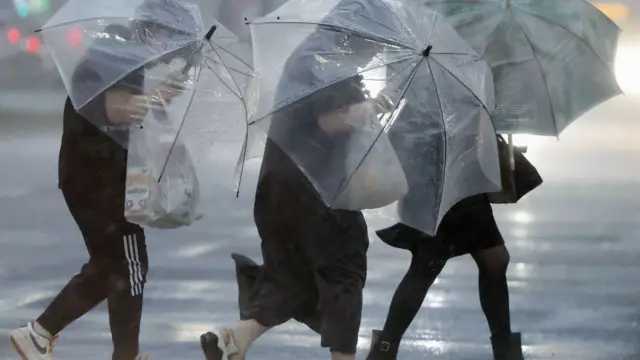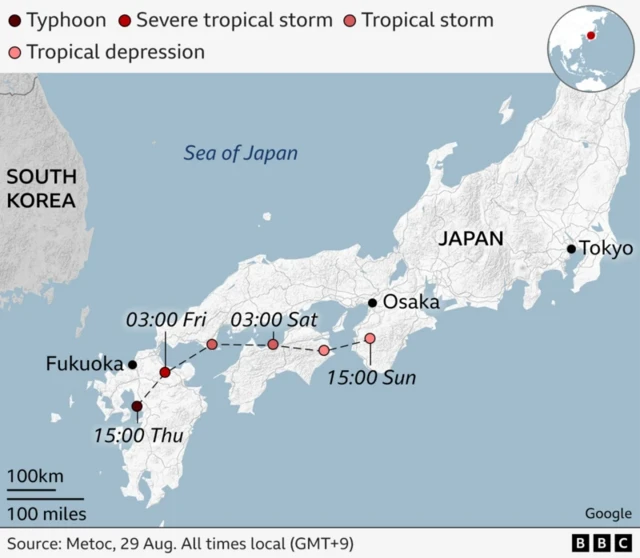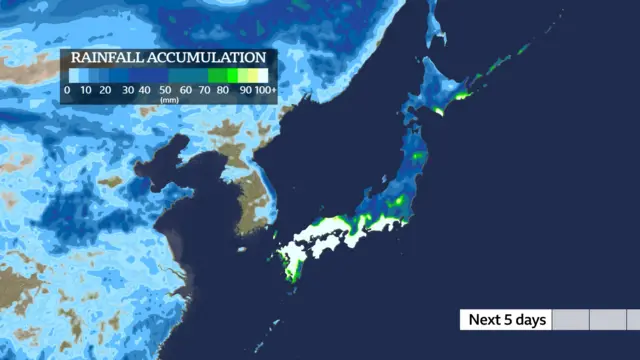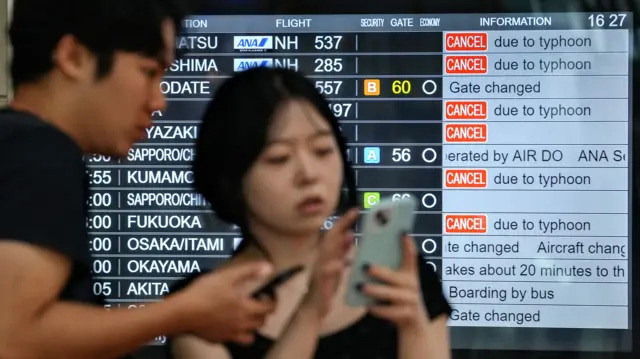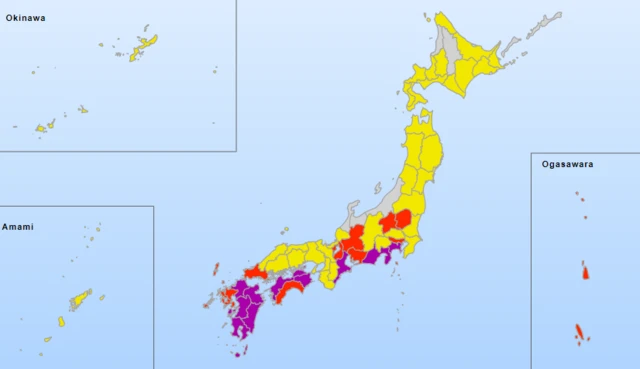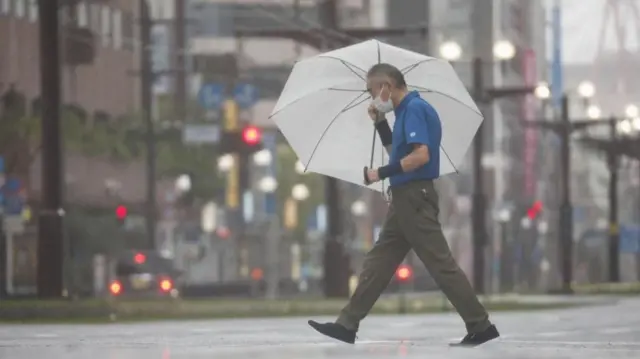Millions told to evacuate in Japan - here's what to knowpublished at 15:23 BST 29 August 2024
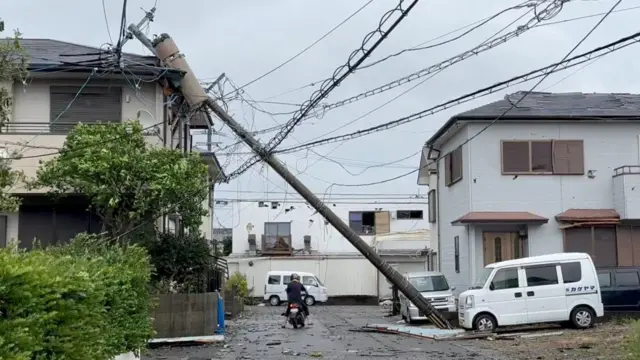 Image source, Reuters
Image source, ReutersIt's close to 23:30 local time in Japan (13:30 FMT), and we're ending our live coverage shortly. Here’s what you need to know from today:
What Happened: Typhoon Shanshan, now downgraded to a “severe tropical storm,” is still causing havoc with rain and gusts hitting southern Japan.
Human Impact: Shanshan has triggered landslides and roof collapses, resulting in at least four deaths. At least 94 people are injured, and one person is still missing. A body was found in the sea, but it’s unclear if it’s the missing person. Hundreds of thousands of homes are without power.
Economic Impact: Trains suspended, highways closed, and over 700 flights cancelled. Companies like Toyota have halted production across Japan.
What Will Happen: Shanshan is moving slowly, which means more heavy rain is on the way. Some areas could see over 700mm of rain. The Japan Meteorological Agency (JMA) is warning both western and eastern Japan to brace for more landslides and flooding.
- You can read more updates on this story, here

